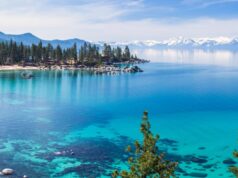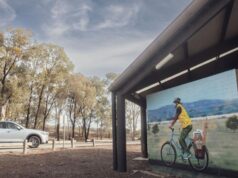Photo credit: Ricky French
This is the second part of the story of two lifetimes. Last month I wrote of Henry and Annie Chaffey, subjects of Jim Henderson’s 1981 book, The Exiles of Asbestos Cottage. The Chaffeys lived as recluses in a mountain hideout called Asbestos Cottage (so-called because of the mine it was situated near, not because of its building material), in the South Island of New Zealand for 37 years, between 1914 and 1951. The lovers were fleeing terrible first marriages; a liberation not socially accepted back then. But their isolation was nothing short of extreme, even given the circumstances.
Henry spent his time hunting and prospecting. He would often spend up to two weeks away from Annie, living off the land and trying to find enough food and money to support their lonely existence. He made frequent long treks into town for supplies, hauling back essential supplies such as flour, sugar and heaps of whisky. Visitors weren’t common. At one stage Annie went seven years without seeing another woman. In the 37 years she left the cottage only once. She never relinquished her pride, though. Visitors would be greeted by Annie wearing fine Edwardian clothes and serving tea on dainty doilies. Fashion never visited Asbestos Cottage.
Went I wrote the first column I’d read only a quarter of the book. I wanted somewhere quiet to finish it, and considered various camp grounds or perhaps the beach, but there could be only one place, really: Asbestos Cottage.
It still stands, lovingly renovated, and holding pride of place in a clearing of native bush, high in Kahurangi National Park. Annie’s terraced garden beds are still there, as are other relics: pots and pans, saws, a soldering iron, a radio antenna; all rusted deep red and displayed on the walls like museum exhibits. Three manuka armchairs face Annie’s old fireplace and bunks lie mute in their old bedroom. You can stay there for five bucks a night. We did two nights. Sweet deal, bro.
But imagining living 37 years at Asbestos Cottage is impossible; a geological timeframe as intangible as trying to grasp the evolution of the 500 million year-old karst landscape where the cottage was built. As night fell and the beech forest dissolved into a shadowy, protective ring, and the windows of the cottage glowed orange, I lit a candle, pulled an armchair to the fire and read the final chapter while the last embers pulsed in Annie’s hearth.
The Chaffey’s latter years were a slow decline. They ate less and drank more. Annie became increasingly isolated and dependant on Henry, who still made his lengthy fossicking and supply-buying trips. But wherever Henry he wandered he would always return home to Annie on the day he said he would. Except for the day he didn’t.
They found Henry’s body on the side of the track, frozen in the snow. He was 83, and had nearly made it home to Annie before his heart gave out. He was buried in an unmarked grave in nearby Takaka. Unable to care for herself Annie was taken by her sister back to Timaru, the far-away small town where she was born. Annie hated it. She was scared of cars, scared of electricity. She locked herself in her bedroom and retreated further than she ever had at Asbestos Cottage. Her sister tried to get her out of the house, and eventually Annie agreed to visit her niece periodically. But it was only to sneak into the bedroom and gather sleeping pills. On a cold night in July, 1953 she wrapped her last remaining money in a bundle, addressed it to her eldest son and threw it out the window. She burned all her clothes, letters and papers, put on her best nightgown and went to bed, knowing she would never wake up. She was buried in Timaru, 400 kilometres away from Henry – the only trace left of Annie Chaffey the fireplace that once coloured her face and now cooked our stew.



